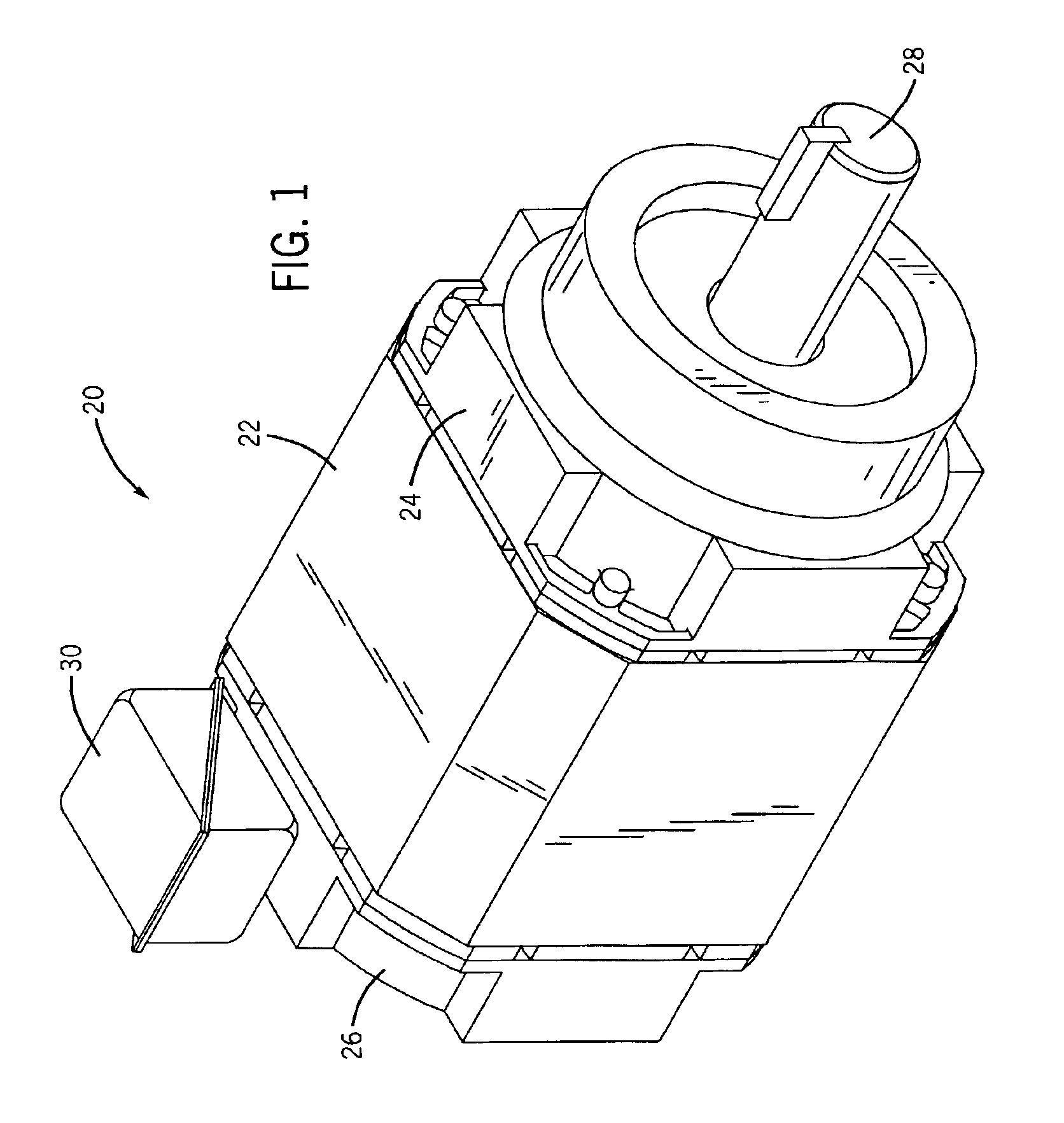Electric apparatus having a stator with insulated end laminations within the central opening of end plates
a technology of electric apparatus and stator, which is applied in the direction of windings, dynamo-electric components, and magnetic circuit shapes/forms/construction, etc., can solve the problems of increased motor cost, increased process cost, and inability to meet the requirements of the electric motor, so as to prevent the likelihood of a short circuit and improve the manufacturing of the electric motor. , the effect of rapid and cost-effective solution
- Summary
- Abstract
- Description
- Claims
- Application Information
AI Technical Summary
Benefits of technology
Problems solved by technology
Method used
Image
Examples
Embodiment Construction
[0021]Turning now to the drawings, and referring first to FIG. 1, an electric motor is shown and designated generally by the reference numeral 20. In the embodiment illustrated in FIG. 1, motor 20 is an induction motor housed in a conventional NEMA enclosure. Accordingly, motor 20 includes a frame 22 open at front and rear ends and capped by a front end cap 24 and a rear end cap 26. The frame 22, front end cap 24, and rear end cap 26 form a protective shell, or housing, for a stator and a rotor. Stator windings are electrically interconnected to form groups, and the groups are, in turn, interconnected in a manner generally known in the art. The windings are further coupled to terminal leads (not shown). The terminal leads are used to electrically connect the stator windings to an external power cable (not shown) coupled to a source of electrical power. Energizing the stator windings produces a magnetic field that induces rotation of the rotor and a rotary shaft 28. The electrical co...
PUM
| Property | Measurement | Unit |
|---|---|---|
| width | aaaaa | aaaaa |
| width | aaaaa | aaaaa |
| width | aaaaa | aaaaa |
Abstract
Description
Claims
Application Information
 Login to View More
Login to View More - R&D
- Intellectual Property
- Life Sciences
- Materials
- Tech Scout
- Unparalleled Data Quality
- Higher Quality Content
- 60% Fewer Hallucinations
Browse by: Latest US Patents, China's latest patents, Technical Efficacy Thesaurus, Application Domain, Technology Topic, Popular Technical Reports.
© 2025 PatSnap. All rights reserved.Legal|Privacy policy|Modern Slavery Act Transparency Statement|Sitemap|About US| Contact US: help@patsnap.com



